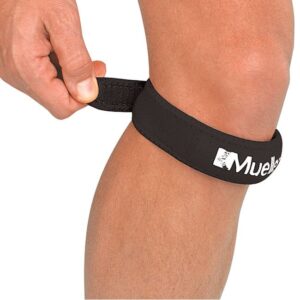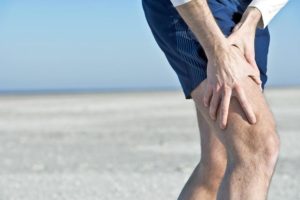Knee Injuries Training
WHEN IT COMES to dealing with injuries, the knee injuries is often one of the major problematic areas of the body.
Whether you’re focused on long distance runs, exercises that require all forms of cutting and lateral activities, or any other tiring activity that’s tough on the legs, the wellbeing of your knees and the surrounding muscles is vital to your fitness goals. Take precaution of them, and your lower body will be taken care of.
1. Jumper’s Knee
Symptoms: The basis of pain is at the bottom and front of the kneecap, and you may feel firmness in the area after a workout. You may also feel pain when bending the thigh muscles. There are four categories of knee injuries, ranging from pain only after training to pain during everyday actions.
Common Causes: As the name implies, jumper’s knee is usually brought on through extreme jumping, typically from sports such as basketball and volleyball. It frequently stems from overuse and lack of keeping the required muscles strong enough to avoid wound.

2. Illiotibial (IT) Band Syndrome
Symptoms: The illiotibial band is rubbery tissue that runs along the outside of the leg from the hip to the lateral side of the shin. IT band disorder grows when the band is irritated, generally resulting in pain on the outside of the knee, or just above the knee on the outside of the leg. ITBS that is not treated accurately can lead to meniscus tears, which can need surgery down the line.
Common Causes: An abrupt rise in level of activity such as increasing mileage as a jogger or jumping into sprint-heavy workouts.

Protect your joints

Ligament wounds in the knee such as an anterior cruciate ligament (ACL) can set you on the sidelines fast. They pain and might limit what you can do.
Ligaments are hard bands of nerve that connect the bones in your body. There are four ligaments in the knee that are susceptible to wound:
- Anterior cruciate ligament (ACL) is commonly wounded knee ligament. It joins the thigh bone to the shin bone.
- Posterior cruciate ligament (PCL) also connects the thigh bone to the shin bone in the knee.
- Lateral collateral ligament (LCL) links the thigh bone to the fibula, the lesser bone of the lower leg on the outer side of the knee.
- Medial collateral ligament (MCL) joins the thigh bone to the shin bone on the inner of the knee.
Diagnosis
- Doctor will give you a physical exam. If your knee is very tight and blown up with blood, your doctor may use a needle to drain it. You may require X-rays to make sure you don’t have a wrecked bone, as well as an MRI to check on any ligament wounds.
Treatment
- A slight to moderate knee injuries ligament wound may cure on its own, in time. To speed the healing, you can:
- Rest the knee. Prevent putting much weight on your knee if it’s painful to do.
Submit your review | |

![Best 5 Health Supplement Website Online in India [2018] best health supplement website](http://www.vitaminhaat.in/wp-content/uploads/2018/08/best-health-supplements-websites-218x150.jpg)






















